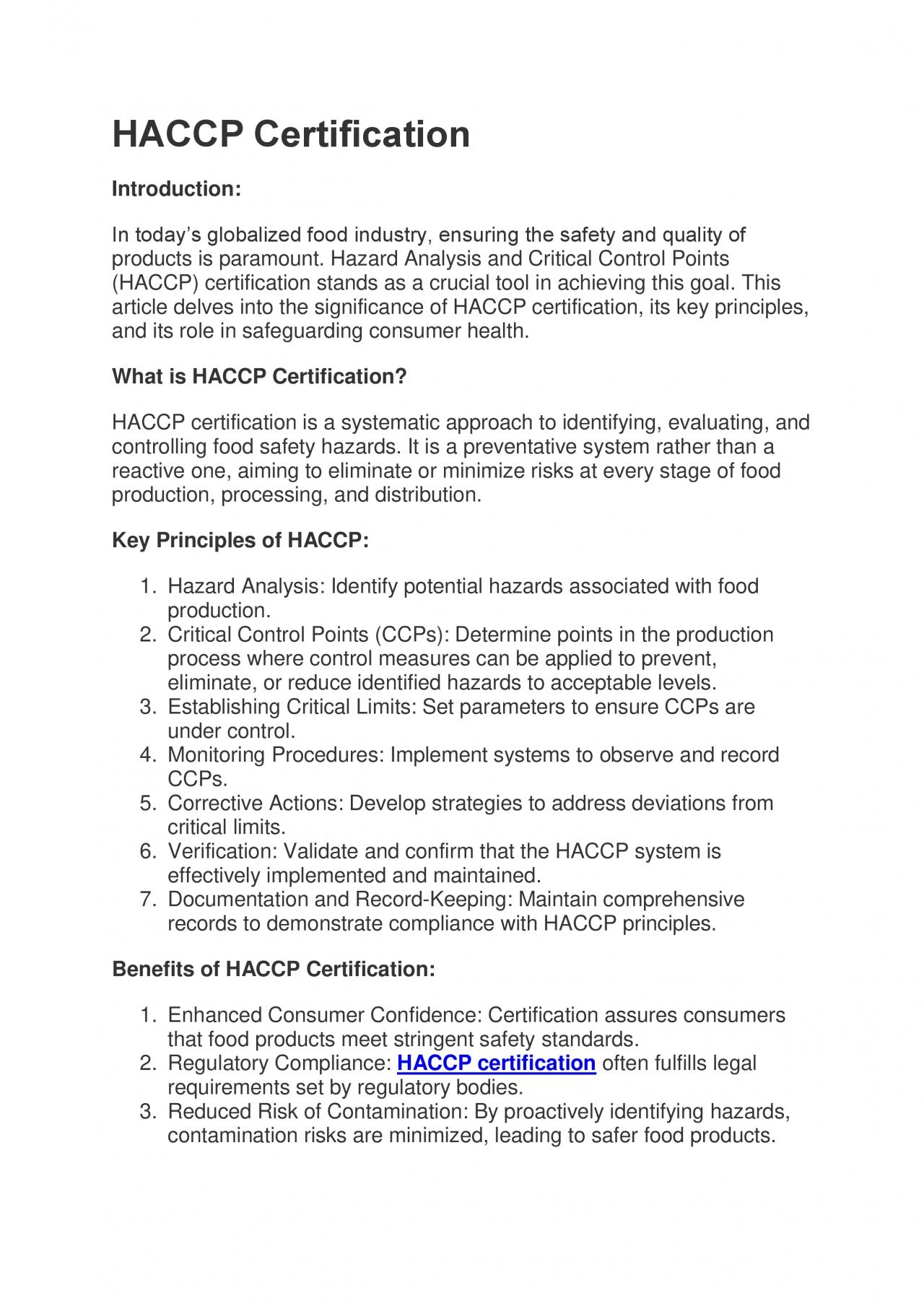

HACCP is an acronym that stands for Hazard Analysis and Critical Control Points The HACCP system is used in food production processing and packaging to help ensure the safety of food products The system is designed to prevent foodborne illness by controlling food safety hazards at each step of t ID: 1046821
Download Pdf The PPT/PDF document "HACCP Certification" is the property of its rightful owner. Permission is granted to download and print the materials on this web site for personal, non-commercial use only, and to display it on your personal computer provided you do not modify the materials and that you retain all copyright notices contained in the materials. By downloading content from our website, you accept the terms of this agreement.
HACCP Certification Introd uction: In today’s globalized food industry, ensuring the safety and quality of products is paramount. Hazard Analysis and Critical Control Points (HACCP) certification stands as a crucial tool in achieving this goal. This article delves into the significa nce of HACCP certification, its key principles, and its role in safeguarding consumer health. What is HACCP Certification? HACCP certification is a systematic approach to identifying, evaluating, and controlling food safety hazards. It is a preventative sy stem rather than a reactive one, aiming to eliminate or minimize risks at every stage of food production, processing, and distribution. Key Principles of HACCP: 1. Hazard Analysis: Identify potential hazards associated with food production. 2. Critical Control Points (CCPs): Determine points in the production process where control measures can be applied to prevent, eliminate, or reduce identified hazards to acceptable levels. 3. Establishing Critical Limits: Set parameters to ensure CCPs are under control. 4. Monitoring Procedures: Implement systems to observe and record CCPs. 5. Corrective Actions: Develop strategies to address deviations from critical limits. 6. Verification: Validate and confirm that the HACCP system is effectively implemented and mainta ined. 7. Documentation and Record - Keeping: Maintain comprehensive records to demonstrate compliance with HACCP principles. Benefits of HACCP Certification: 1. Enhanced Consumer Confidence: Certification assures consumers that food products meet stringent safety standards. 2. Regulatory Compliance: HACCP certification often fulfills legal requirements set by regulatory bodies. 3. Reduced Risk of Contamination: By proactively identifying hazards, contamination risks are minimized, leading to safer food products. 4. Improved Efficiency: Streamlined processes and systematic risk management result in greater operational efficiency. 5. Market Access: Many retailers and buyers require HACCP certification as a prerequisite for suppliers, facilitating market access. 6. Brand Reputation: Certification enhances brand reputation by demonstrating a commitment to food safety and quality. HACCP Certificat ion Process: 1. Training: Personnel involved in food production undergo HACCP training to understand principles and implementation. 2. Hazard Analysis: Identify and assess potential hazards associated with the product and process. 3. Establishing CCPs: Determine cr itical control points where control measures can be applied. 4. Implementing Monitoring Procedures: Develop systems to monitor CCPs and record data. 5. Establishing Corrective Actions: Define procedures to address deviations from critical limits. 6. Verification an d Documentation: Validate the effectiveness of the HACCP system through regular audits and maintain comprehensive records. Conclusion: HACCP certification serves as a cornerstone in ensuring the safety and quality of food products. By adhering to its principles and undergoing rigorous certification processes, food businesses can mitigate risks, protect consumer health, and bolster their r eputation in the marketplace.